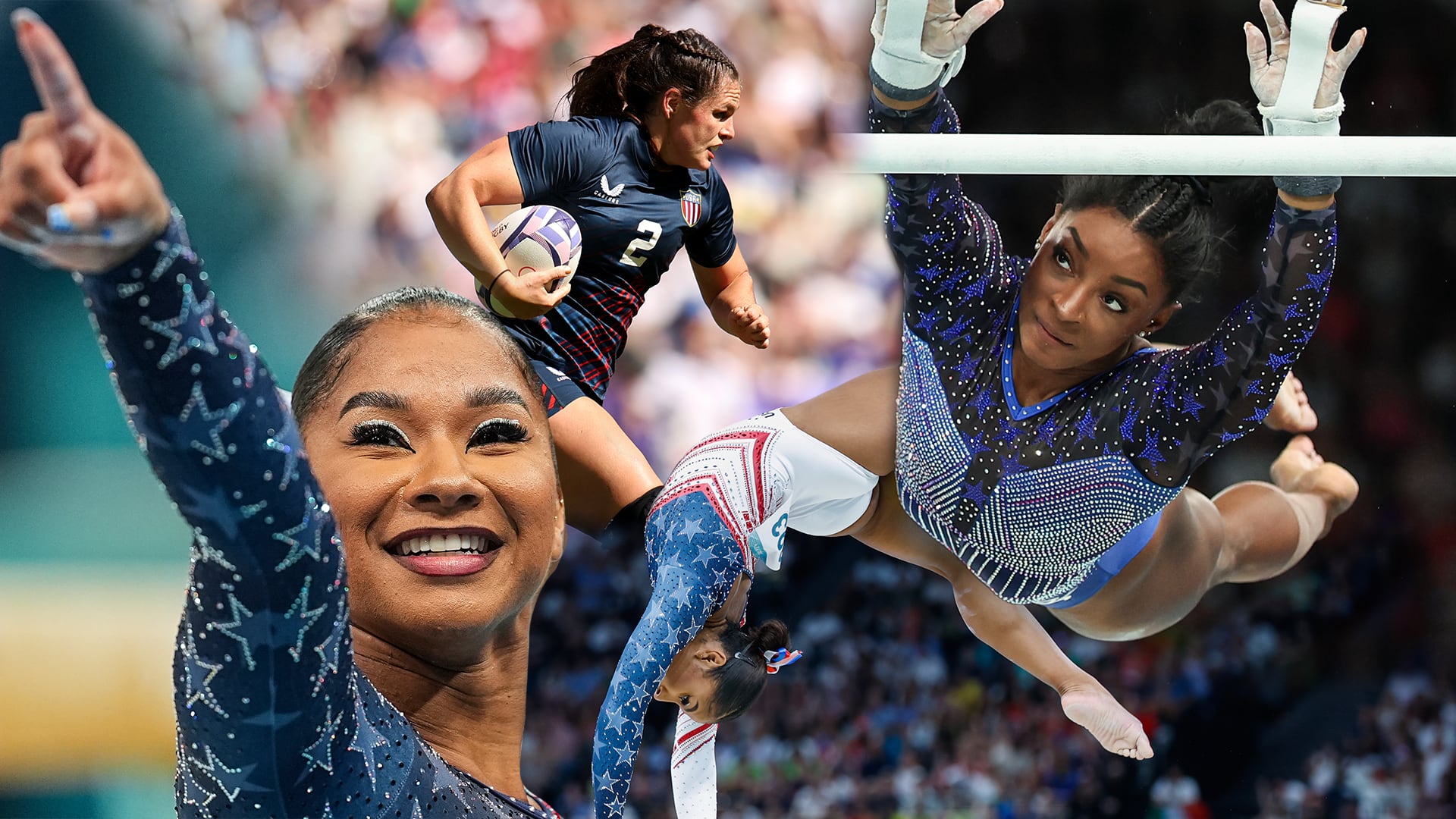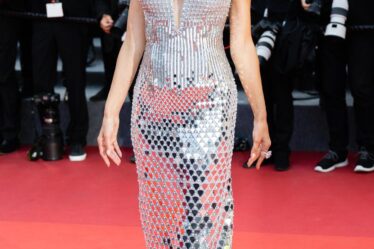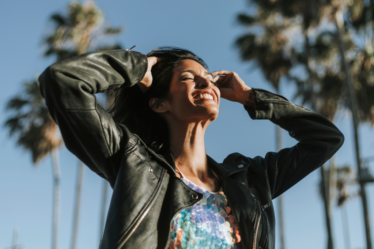
Just like fashion, beauty brands want to have their Olympic moment.
This year has seen an influx of fashion brands advertising around the Paris games, either as official sponsors, like LVMH, one of the event’s premium partners; as team outfitters, as in the case of Skims with Team USA; or through Olympic-adjacent activations, such as J.Crew’s collaboration with USA Swimming.
And beauty brands want a piece of the action, too. LVMH-owned retailer Sephora is the official sponsor of the torch relays and Rihanna’s Fenty Beauty is also an official partner. Other brands engaging in Olympic-adjacent marketing including the always-buzzy beauty label Glossier, which inked a long-term deal to be the US women’s basketball team’s official beauty partner; hair care seller K18, which tapped gymnast Simone Biles as an ambassador; and minimal makeup brand Merit Beauty, which cast retired track star Allyson Felix in a video to show her “five-minute makeup” routine for Merit’s social media.
A confluence of factors have made these Games more appealing to beauty brands: Over 5,000 female athletes will be participating in this year’s games; 2024 marks the first time the Olympics reached gender parity since the organisation’s founding in 1896. That means there are more potential partners for beauty brands, who by and large cater to female consumers. Plus, there’s more interest in women’s sports at large, with the category projected to generate over $1.28 billion dollars in revenue in 2024, a 300 percent increase from 2021.
“There is a lot of opportunity for beauty brands to really make noise,” said Alexandra Gachet, Caudalie’s global communications director. “But there is an opportunity to get it wrong as well and miss the moment.”
But it’s trickier to market beauty during the Olympics than it is fashion. A sportswear brand’s logo is front-and-centre on an athlete’s kit, but it’s less obvious where an athlete got their colourful eyeliner (like the yellow cat eye seen on silver medal-winning gymnast Rebeca Andrade during the all-around final) or a bold red lip (like the kind rugby player Ilona Maher sports on and off the field). This reality poses a challenge to brands who mainly rely on a strategy of seeding products to athletes, said Gachet.
Beauty brands that have cut through the marketing noise at this year’s games have been creative in getting their brand messaging and product offering in front of viewers. Brands under the Olympics tent have leveraged their official sponsor status in ways they hope will reverberate beyond the Olympic Village, while other labels are highlighting the performance of their products, dominating Olympics social chatter on TikTok and targeting unconventional beauty categories in an effort to stand out.
“It’s all about agility, creativity and speed, in beauty campaigns just as in sport,” said Gachet.
Leveraging Official Status
Only official Olympic sponsors are allowed to use Olympics branding in their marketing. In beauty, that means that privilege is restricted to labels owned by official partners LVMH and Procter & Gamble, like Fenty Beauty (owned by LVMH) and hair-care label Mielle Organics (a part of P&G). Though they have that advantage, these brands aren’t content to just rely on the official connection to showcase their names to viewers at home.
Fenty Beauty, for example, is gifting beauty kits to the 600 volunteers — all aged 18 to 21 — who are presenting the medals to the winning athletes. The medal bearers will also have access to Fenty’s suite of makeup artists in order to get their faces camera ready for their time on screen for the victory ceremonies. The brand was also at the centre of a much-talked-about moment when gold medal-winning gymnast Simone Biles was spotted using Fenty’s setting powder on the sidelines of the team final.
P&G-owned Mielle Organics, meanwhile, wanted to use its association with the Olympics brand to bring more visibility to the textured-hair expertise gap in women’s sports. The brand is the only textured hair brand servicing coily, curly and wavy hair types in P&G’s beauty and grooming salon at the Olympic Village. Its aim is to have athletes with textured hair “look their best by having stylists that know how to do their hair,” said Omar Goff, Mielle’s president. At the salon, athletes at the Olympic Village will be able to request looks ranging from braids and blowouts to trims and curly cuts.
“A number Black women say that they avoid physical activity because of fear of what will happen to their hair in the process,” said Goff, referring to a 2017 study on the sociocultural barriers to physical activity faced by Black women. “We want to show that we are a product that you can trust and rely on to go after your athletic aspirations.”
Goff said having a presence in the salon will communicate to viewers that “whenever they see an afro or braids on screen, they will know Mielle was behind it.”
Capturing Momentum Beyond the Tent
Like in fashion, the brands benefitting from Olympics-centric marketing go far beyond official partners. But because they aren’t permitted to use Olympic branding in their ads, they are forced to find workarounds.
French skincare label Caudalie found a path to virality with an Instagram video that showed an enlarged version of the brand’s Vinoperfect Serum cruising along the Seine River — a drop of the product falls into the river, causing it to turn from a murky brown to a sky-blue hue. The video, a nod to Paris mayor Anne Hidalgo taking a much-publicised dip in the river to prove it was clean enough for the triathlon competition, earned over 8 million views.
“We knew that we couldn’t directly reference the Olympics because we are not a partner and we couldn’t afford to be. But we wanted to be a part of the conversation,” said Gachet. “Everyone was talking about the Seine and how it’s always so dirty and the mayor’s swim, so we had to jump on the opportunity as soon as possible.”
Caudalie’s Olympics strategy relied on anticipating viral moments before they occur, so the team combed the internet to find trending moments and then determined how to translate them to fit their brand.
Product efficacy is also at the centre of beauty brands’ Olympic dialogue. L’Oréal Paris tapped rugby player Maher while makeup label Milani hired basketball star Sabrina Ionescu and gymnast Jordan Chiles to promote their brands’ respective setting sprays. Both claim their products resist sweat and makeup transference, which would be helpful for athletes in contact sports as well as consumers handling sweltering heat.
For those further away from the Olympic action, finding “authentic channels for storytelling” has been the biggest challenge, said Julia Ramanadhan, global vice president of marketing at Los Angeles-based skincare brand Dermalogica.
In the weeks leading up to the Olympics, the brand gave away its Dynamic Skin Recovery SPF 50 sunscreen to members of the Venice Run Club, a runner’s community in Los Angeles, hoping to convert them to paying customers as well as put Dermologica in conversation with the sport. It also launched a campaign starring track and field athlete Dalilah Muhammad to promote the same product ahead of the Olympics.
“For the indie brands, which wouldn’t have the budgets for the major sponsorship opportunities, the opportunity lies in how they can be engaged in the conversation and communities peripheral to the official festivities,” said Ramanadhan.
Tattoo-aftercare brand Mad Rabbit, meanwhile, is offering tattoo-aftercare kits (a soothing gel, a tattoo balm, exfoliating lotions and soap) to current and former Olympians, a nod to the tradition of athletes getting tattoos of the Olympic rings after competing. It will also host a post-Olympic event in its Los Angeles studio for athletes who wish to get the famed tattoo themselves.
These sort of activations are a bit more untested than an official team-up, but Oliver Zak, Mad Rabbit’s co-founder and chief executive, feels it’s worth the risk.
“This is somewhat of a blind investment in that we can’t really guarantee that the athletes will post or mention us,” said Zak. “But we hope that by targeting tattoos we are differentiated enough from the traditional beauty brands to be memorable.”



